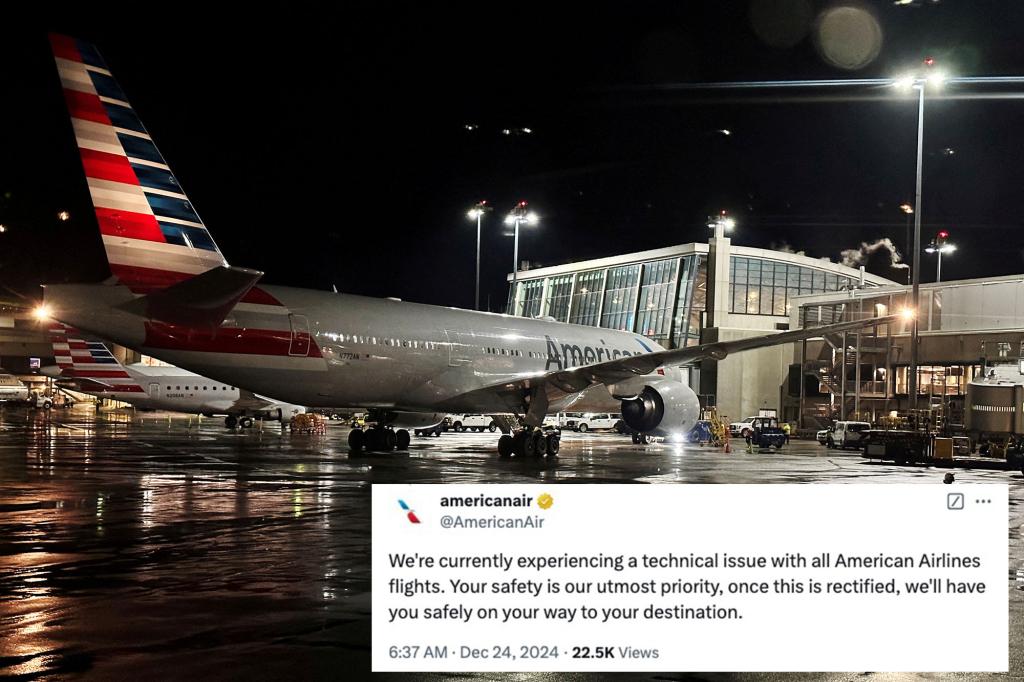On Christmas Eve morning, a temporary ground stop implemented by American Airlines sent ripples of anxiety through thousands of holiday travelers. At approximately 6:30 a.m., the airline announced a systemwide technical issue affecting all of its U.S. flights, offering no specifics about the nature of the problem. This announcement came at a particularly sensitive time, with the holiday travel season in full swing and an estimated 40 million passengers expected to pass through U.S. airports between Christmas and New Year’s Day.
The abrupt halt in operations left passengers stranded and uncertain. American Airlines, a major player in the aviation industry with daily flights to over 350 destinations across 60 countries, found itself at the center of a logistical nightmare. The lack of information regarding the cause and estimated duration of the ground stop only fueled the growing concern among travelers. While the airline remained tight-lipped about the specifics of the technical glitch, their responses on social media platforms indicated that they were working diligently to rectify the situation as quickly as possible.
The Federal Aviation Administration (FAA) lifted the ground stop shortly before 8:00 a.m., less than two hours after it was initially implemented. However, the FAA also refrained from disclosing the root cause of the technical disruption, leaving the public and industry experts to speculate. The brief but impactful disruption served as a stark reminder of the vulnerability of complex technological systems that underpin modern air travel. Even a short interruption can have cascading effects, disrupting travel plans and causing significant inconvenience for thousands of passengers.
This incident underscores the interconnectedness of various systems within the aviation industry. While the technical issue originated within American Airlines’ systems, its impact extended to the FAA, which had to step in to manage the resulting disruption to air traffic. The rapid resolution of the issue suggests effective communication and coordination between the airline and the FAA, highlighting the importance of collaborative efforts in managing such crises. However, the lack of transparency regarding the cause of the technical malfunction raises questions about potential systemic vulnerabilities and the need for more robust preventative measures.
The timing of the technical glitch could not have been worse for American Airlines or its passengers. The holiday season is a peak travel period, with airports already operating at near capacity. The unexpected ground stop exacerbated existing pressures on the air travel system, adding to the challenges faced by both airlines and passengers. The disruption likely led to flight delays and cancellations, impacting travel itineraries and potentially causing significant inconvenience, especially for those with connecting flights or time-sensitive travel arrangements.
The incident serves as a valuable learning experience for the aviation industry, highlighting the importance of robust systems, effective communication, and transparent crisis management. While technology has revolutionized air travel, making it more efficient and accessible, this incident serves as a cautionary tale about the potential for disruptions when complex systems malfunction. Moving forward, airlines and regulatory bodies like the FAA must prioritize investments in resilient technological infrastructure, proactively address potential vulnerabilities, and enhance communication protocols to minimize the impact of such incidents in the future. Further investigation into the root cause of this specific ground stop is crucial to prevent similar occurrences and maintain public trust in the safety and reliability of air travel.

